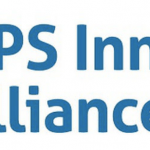The Federal Communications Commission — after a multi-agency process that started in October 2013 — approved on November 15 of this year a request from the European Union that Galileo signals be allowed to be received in the United States.
Though the Galileo signals were already being broadcast in the U.S., and there was no enforcement effectively denying their informal use, the official approval enabled nonfederal agencies to use Galileo signals to meet official needs. For example, it will now be possible to use the two approved Galileo signals to more accurately locate cell phone callers who are dialing 911 for help in an emergency.
But it was just two signals that were given the thumbs up by regulators. The original request was for approval of the Galileo E1, E5 and E6 signals. The FCC approved receipt of E1 and E5, which overlap with U.S. GPS signals. That approval also means that those signals will be protected from future interference when requests to use spectrum in other ways come before the commission.
The FCC declined to approve the E6 signal, which falls in the 1260-1300 MHz band. The commission determined that allowing receipt in the U.S. might create interference issues and limit options for expanding use of the neighboring 1300-1350 MHz band.
“We are concerned that granting a waiver for non-Federal receiver operations with the E6 signal at this time, without more extensive consideration of the U.S. allocation issues associated with E6 receiver operations in the 1240-1300 MHz band, would result in significant uncertainty regarding the nature of any harmful interference protection rights that could be afforded operations with the E6 signal now or in the future,” the FCC wrote in its order. “We are additionally concerned that granting a waiver has the significant potential of creating problematic electromagnetic compatibility concerns in the future that could constrain our spectrum management regarding non-Federal operations in the United States in the spectrum above 1300 MHz, where potential changes in the non-Federal allocation are under consideration.”
On December 17 the GPS Innovation Alliance (GPSIA) asked the FCC to reconsider its E6 decision.
Instead of turning down the E6 signal request the commission “should defer action on that issue until it assesses whether GNSS devices can co-exist with potential operations in the adjacent 1300-1350 MHz band when these possible uses are better defined,” GPSIA wrote. “The Commission should also clarify that the Commission’s decisions (or lack thereof) in intergovernmental waiver proceedings only address the issue of whether the users of devices which receive foreign signals can invoke the benefit and protection of U.S. law (e.g. protection from interference).”
Not allowing E6 could put U.S. receiver manufacturers at a competitive disadvantage, GPSIA said.
“Depending on how the ruling is applied, users that employ devices that originate in Europe or other countries may be required to adjust operation of those devices for use in the United States (and, as described above, those devices will have diminished utility),” the industry association said. “Conversely, users with devices produced for the U.S. market may not be able to take advantage of the E6 signal when those devices are operated elsewhere. The results of the Galileo Order for manufacturers are similar. Manufacturers may be required to produce two forms of products — one for sale in the U.S., where users are not permitted to operate with the E6 signal, and one for sale elsewhere. The need to produce two versions of what is otherwise the same device will unnecessarily drive up user costs and potentially place U.S. manufacturers that market GNSS devices globally at a competitive pricing disadvantage vis-à-vis manufacturers that produce only for non-U.S. markets. The increased cost of producing and designing equipment solely for the U.S. market as compared to equipment that can be used worldwide will also hinder innovation in GNSS device manufacturing and new applications in the U.S. markets.”
The fact that the U.S. does not currently have an allocation for Radionavigation-Satellite Service (“RNSS”) in the band where E6 is located is all the more reason for waiting to see what the future will hold and not denying use of E6 at this time, the GPS industry association asserted. The FCC could delay a decision until it decides whether or not to update the frequency allocation table — a process that would likely overlap with decisions regarding the compatibility of GNSS devices with potential terrestrial operations in the 1300-1350 MHz band. Those decisions, GPSIA, wrote, could themselves require changes in the Table of Frequency Allocations.
The Alliance also noted that U.S. policy statements and international agreements indicated broad support for approval of GNSS signals including those from Galileo. In particular the agreement between the U.S. and EU that ensured GPS and Galileo compatibility, stated that the U.S. would not restrict “use of or access to” Galileo signals in the U.S.
“Until the Commission undertakes the analysis to determine how the two services can co-exist in adjacent bands, it should not reject the EC request,” GPSIA wrote. “Instead, it should hold the EU request in abeyance rather than denying it.”
Information on the request can be docket IB 17-16.






